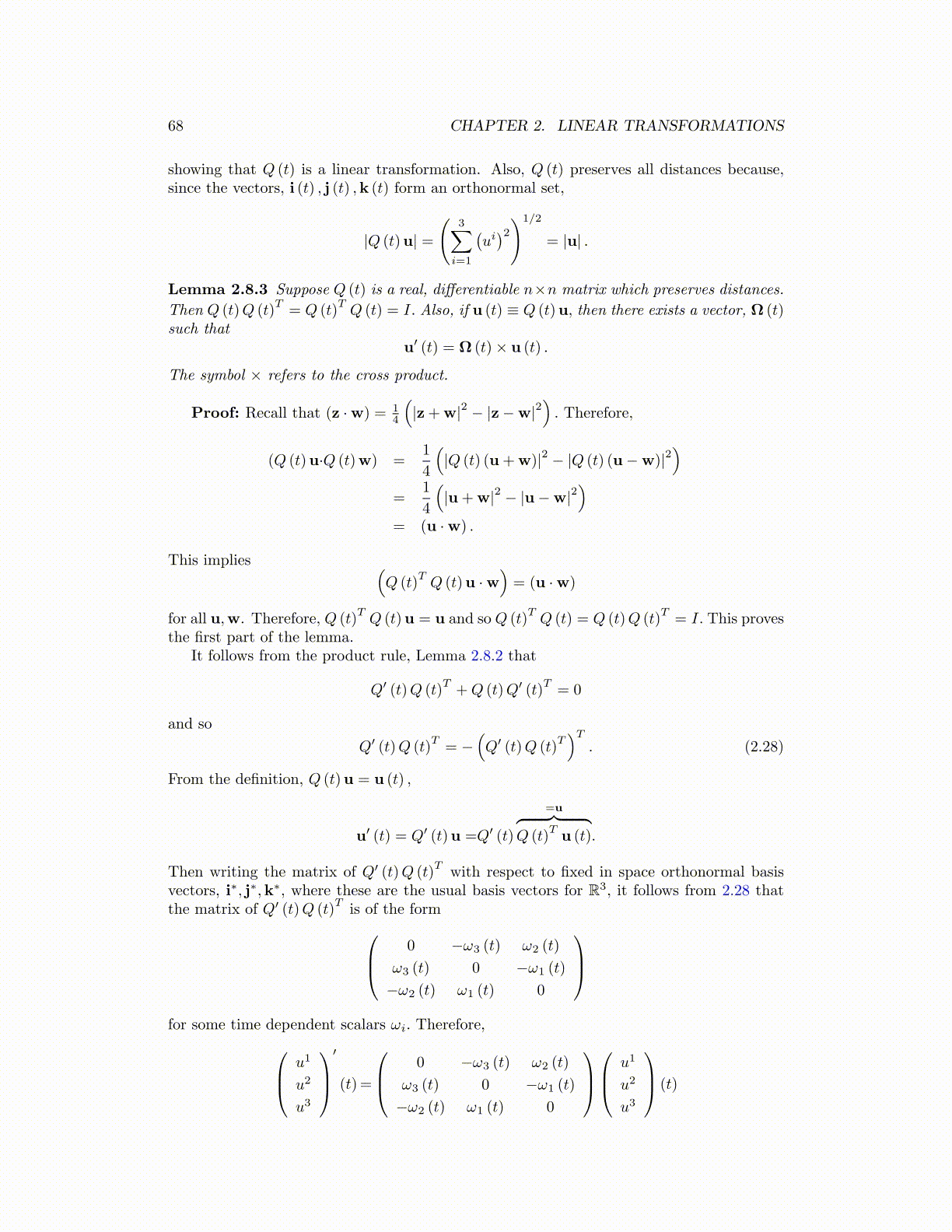
68 CHAPTER 2. LINEAR TRANSFORMATIONS
showing that Q (t) is a linear transformation. Also, Q (t) preserves all distances because,since the vectors, i (t) , j (t) ,k (t) form an orthonormal set,
|Q (t)u| =
(3∑
i=1
(ui)2)1/2
= |u| .
Lemma 2.8.3 Suppose Q (t) is a real, differentiable n×n matrix which preserves distances.
Then Q (t)Q (t)T= Q (t)
TQ (t) = I. Also, if u (t) ≡ Q (t)u, then there exists a vector, Ω (t)
such thatu′ (t) = Ω (t)× u (t) .
The symbol × refers to the cross product.
Proof: Recall that (z ·w) = 14
(|z+w|2 − |z−w|2
). Therefore,
(Q (t)u·Q (t)w) =1
4
(|Q (t) (u+w)|2 − |Q (t) (u−w)|2
)=
1
4
(|u+w|2 − |u−w|2
)= (u ·w) .
This implies (Q (t)
TQ (t)u ·w
)= (u ·w)
for all u,w. Therefore, Q (t)TQ (t)u = u and so Q (t)
TQ (t) = Q (t)Q (t)
T= I. This proves
the first part of the lemma.It follows from the product rule, Lemma 2.8.2 that
Q′ (t)Q (t)T+Q (t)Q′ (t)
T= 0
and so
Q′ (t)Q (t)T= −
(Q′ (t)Q (t)
T)T
. (2.28)
From the definition, Q (t)u = u (t) ,
u′ (t) = Q′ (t)u =Q′ (t)
=u︷ ︸︸ ︷Q (t)
Tu (t).
Then writing the matrix of Q′ (t)Q (t)T
with respect to fixed in space orthonormal basisvectors, i∗, j∗,k∗, where these are the usual basis vectors for R3, it follows from 2.28 thatthe matrix of Q′ (t)Q (t)
Tis of the form 0 −ω3 (t) ω2 (t)
ω3 (t) 0 −ω1 (t)
−ω2 (t) ω1 (t) 0
for some time dependent scalars ωi. Therefore, u1
u2
u3
′
(t)=
0 −ω3 (t) ω2 (t)
ω3 (t) 0 −ω1 (t)
−ω2 (t) ω1 (t) 0
u1
u2
u3
(t)